
Peacocks of the peafowl are beautiful creatures that people easily find in zoos. Learn a few peacock facts to know the significance of their existence to society and culture, why their kind became domesticated species, and why everyone should give them the care that they deserve.
- The name ‘peacock’ only applies to the male gender of the species, whereas females go by ‘peahen.’
- ‘Peafowl’ is the appropriate collective name for them.
- Newly hatched young are called ‘peachicks.’
- Peacocks are big, colorful pheasants with a reputation for their lustrous tails.
- As omnivorous birds, peacocks fed on various edible items regardless of being a plant or animal source.
- Rainforests and forests served as the first and most comfortable natural habitat for peafowls.
- Peacocks usually appear twice the size of peahens.
- Peacocks renew their feathers once every year.
- Peahens choose their mates based on a peacock’s color, size, and feather or train quality.
- Peacocks display their bright feathers most prominently during spring, the breeding season.
- Their large feathers and wingspan with an average of 4.9 feet made peacocks one of the largest flying birds in the world.
- Peafowls have an average running speed of 10 mph or 16kph.
- Peachicks can only cross areas alongside their parents due to other-peacocks threats.
- Because they do not have webbed feet, peafowls cannot swim.
- Some natural predators that prey on peafowl are jungle cats, stray dogs, and mongooses.
- Light striking from different angles makes a peacock’s feather change colors.
- Peafowls create their nests on the ground, though they prefer perching on treetops.
- The Bible hailed peacocks as the most precious item aboard King Solomon’s ships coming from Asia.
- Peafowl became a symbol for immortality due to ancient Greek belief that its flesh does not decay after death.
- The only large phasianid in Africa is the Congo peacock.
Peacock Facts Infographics
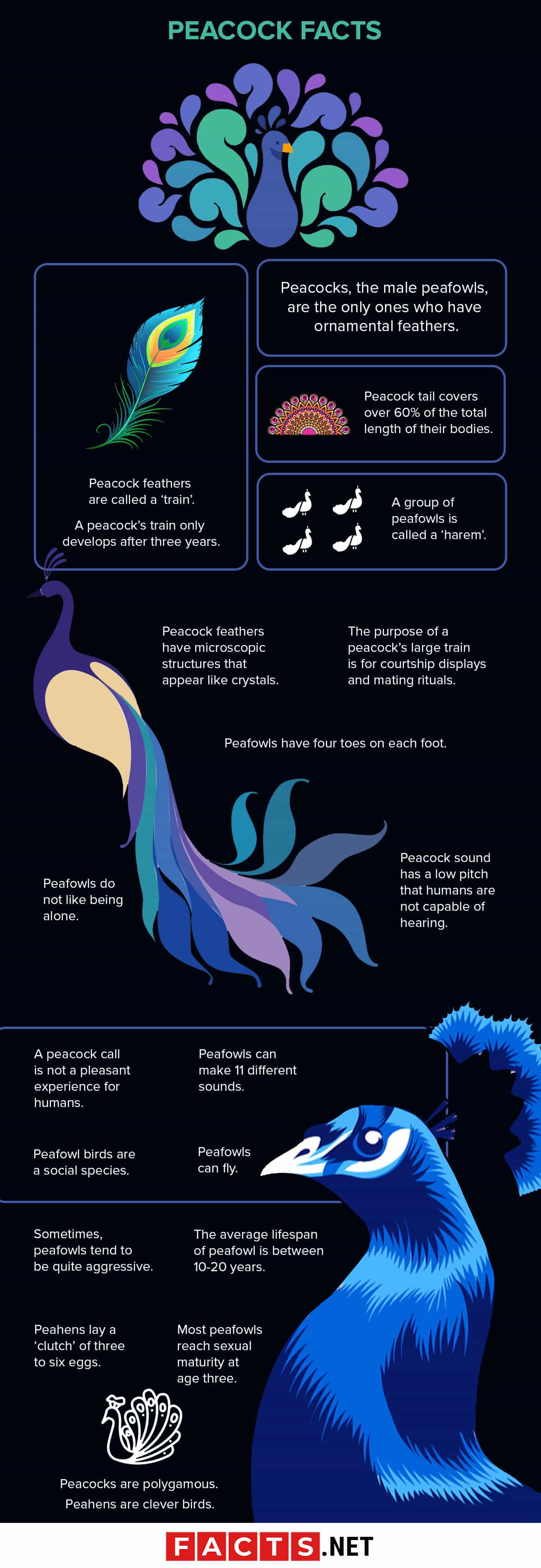
Peacocks, the male peafowls, are the only ones who have ornamental feathers.
Contrarily, peahens or the female peafowls have feathers of muted color under variations of brown. Peacock colors are the most striking difference among the species.
Peacock feathers are called a ‘train’.
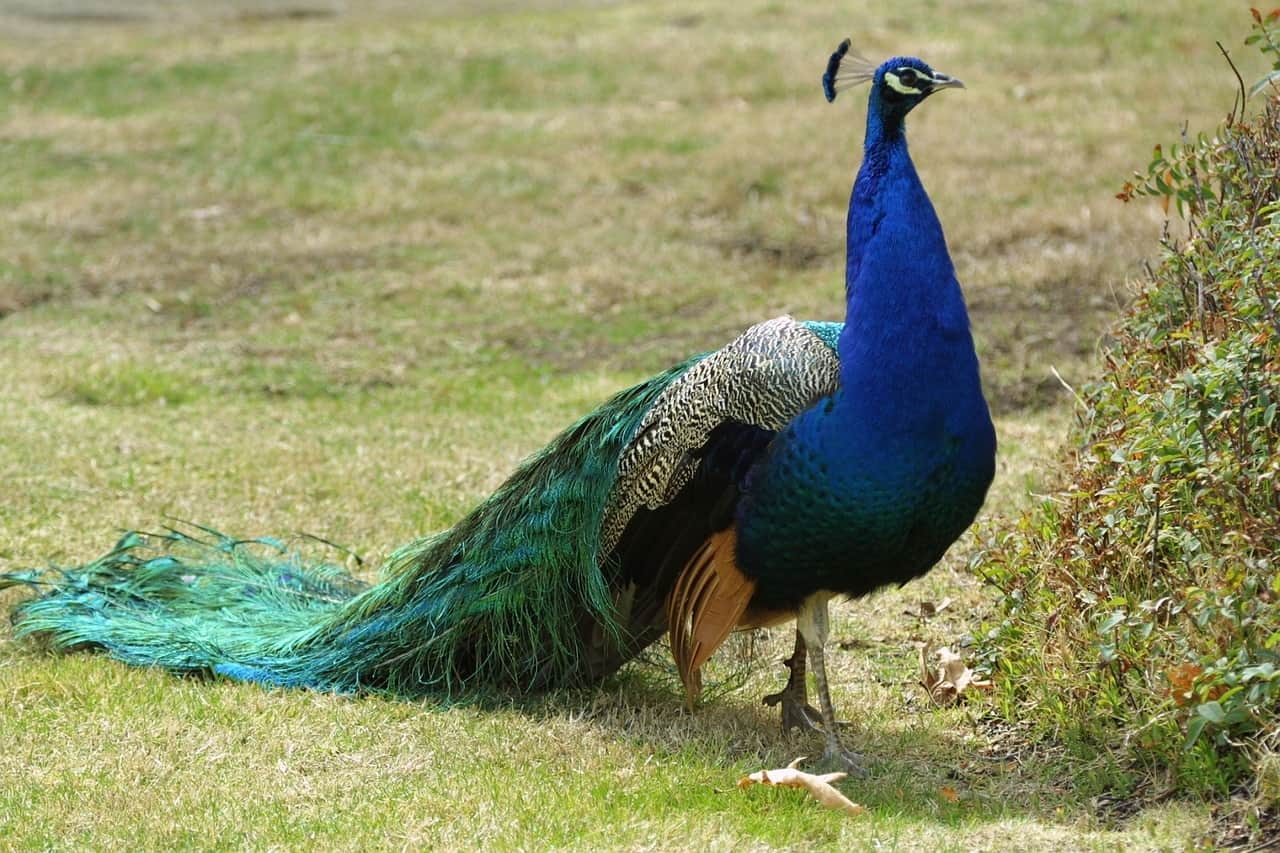
This part is the most decorative among their feather body. It can reach up to six feet behind their body in a long flowing colorful display.
Peacock tail covers over 60% of the total length of their bodies.
Colorful eye-shaped markings on the train can vary from blue, red, gold and other hues.
The purpose of a peacock’s large train is for courtship displays and mating rituals.
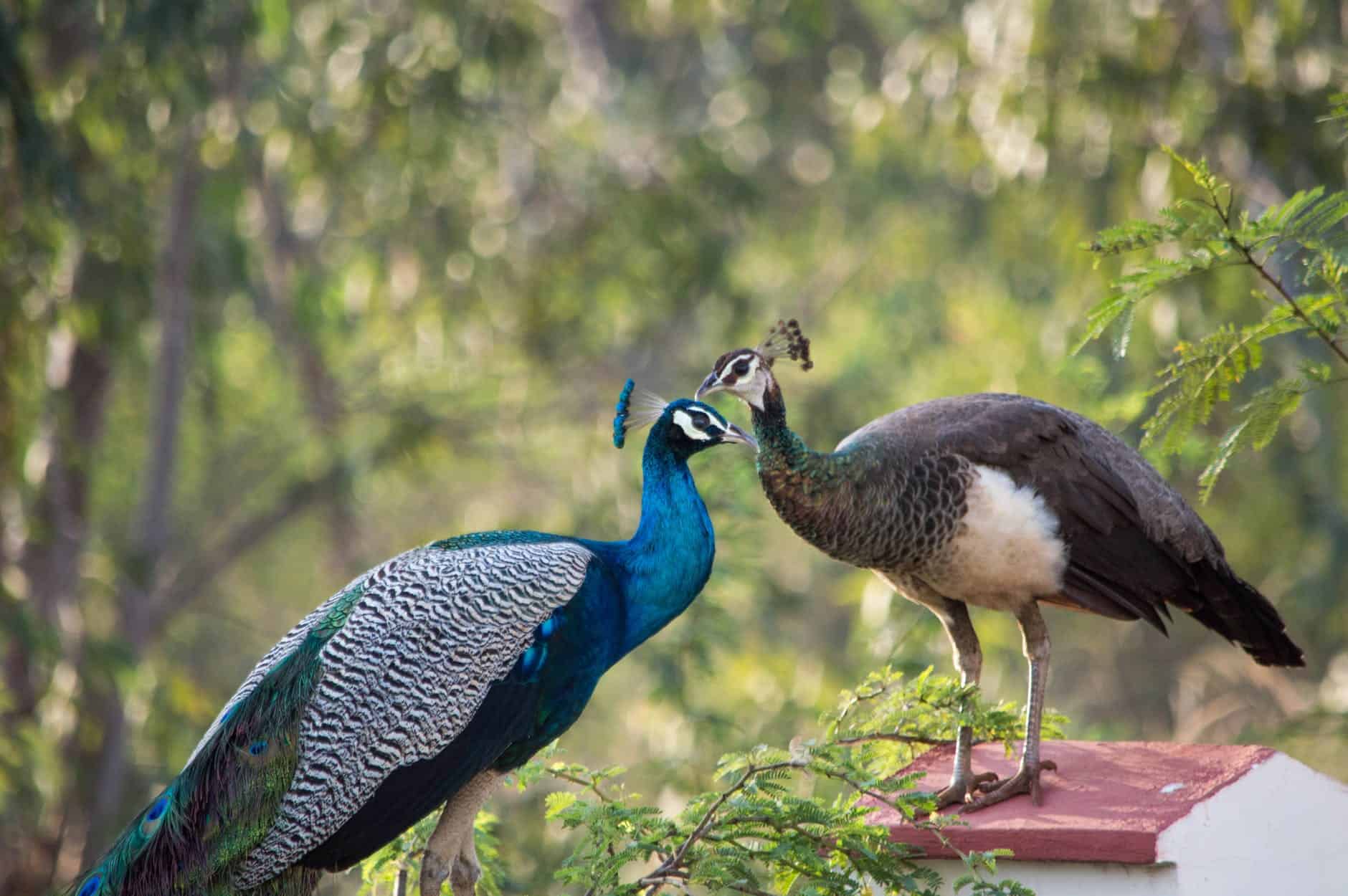
It can arch into the form of a majestic fan that spans across a peacock’s back, touching the ground on both sides. The quality of these feathers would then serve as a standard for peahens in choosing prospective mates.
Peacock feathers have microscopic structures that appear like crystals.
This quality results in the reflection of various wavelengths of light on their colorful train. In other words, the crystal-like structures are responsible for the fluorescent colors of a peacock’s train.
A peacock’s train only develops after three years.
It is difficult to identify the gender of a peachick upon birth. Still, they grow up swiftly that they can walk independently after a week. They learn to fly after a few months.
Peafowls have four toes on each foot.
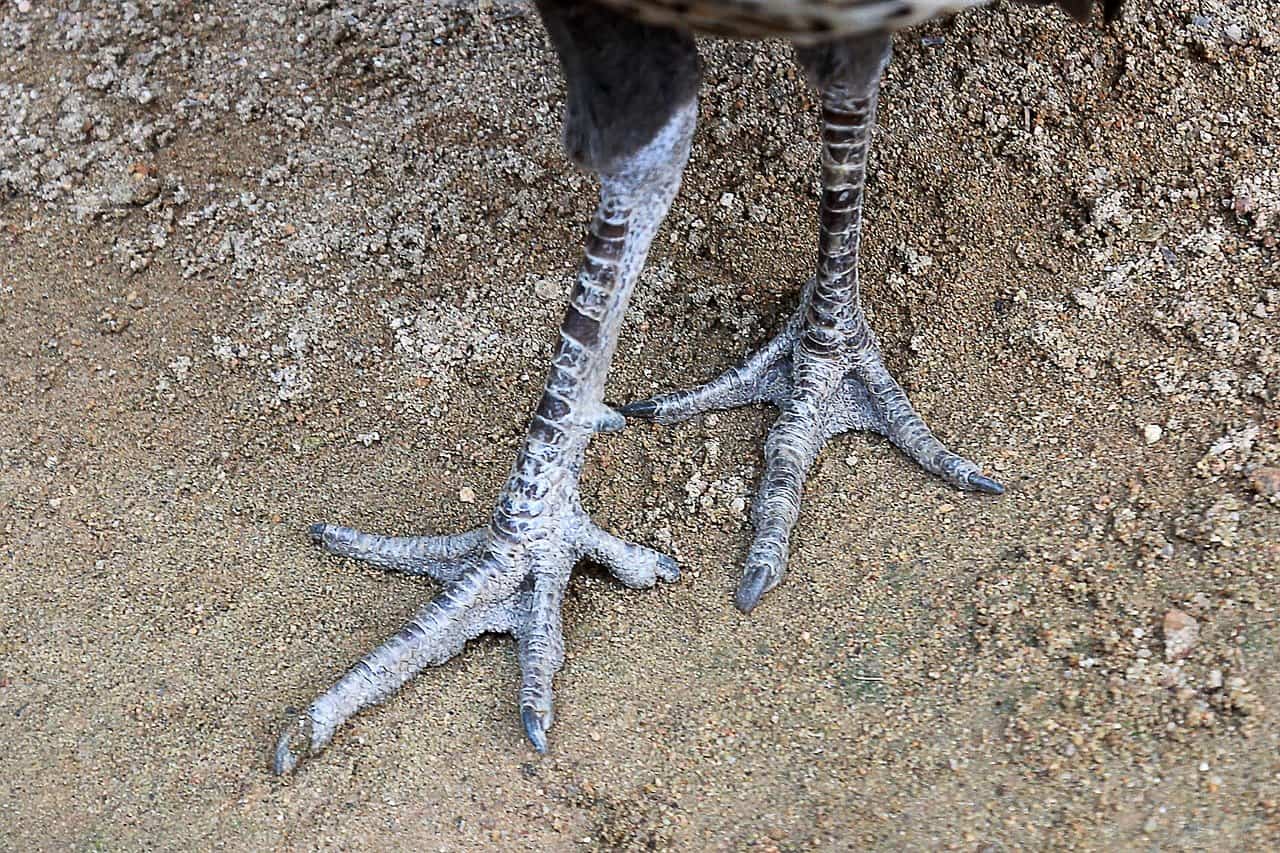
Three of them point forward while one is in a directly opposite position backward. Despite being unique, this toe arrangement is helpful for when peafowls need to grab branches and roosts in trees.
Peacock sound has a low pitch that humans are not capable of hearing.
Whenever they shake their tail a certain way, the gesture produces a noise that is almost as loud as the sound of a passing car. Their fellow birds can sense and respond to the ‘infrasound’ noise with that has a volume of 70-108 decibels. However, human ears only perceive it as ‘rustling grass in the wind’.
A peacock call is not a pleasant experience for humans.
Their species is among the loudest creatures in terms because of the screeching sounds that they make. During the monsoon, their calls become more frequent as their meowing sounds indicate the onset of rain.
Peafowls can make 11 different sounds.

Another difference among their species is that the peacocks are the ones who really yell. Their call can go for long distances and sounds like “may-AWE, may-AWE.”
Peafowls do not like being alone.
They tend to go around within small groups with a high dependency on their fellow birds.
A group of peafowls is called a ‘harem’.
However, an all-female group has specific names such as ‘bevvy,’ ‘muster,’ or a ‘party’.
Peafowl birds are a social species.
Aside from forming groups among their own kind, they also like interacting with humans. They show it by showing altruism or attachment towards the chosen ones.
Sometimes, peafowls tend to be quite aggressive.

They become territorial when a stranger enters the boundaries that they have set, whether it is a human or a fellow peafowl.
The average lifespan of peafowl is between 10-20 years.
At least, that is the case when they are in the wild. On the contrary, they can live up to 50 years when they are kept under captivity.
Peacocks are polygamous.
They are known for having more than one partner in the wild. The minimum number of partners that one keeps is two, but they can have up to five female partners with whom they can mate.
Peahens lay a ‘clutch’ of three to six eggs.
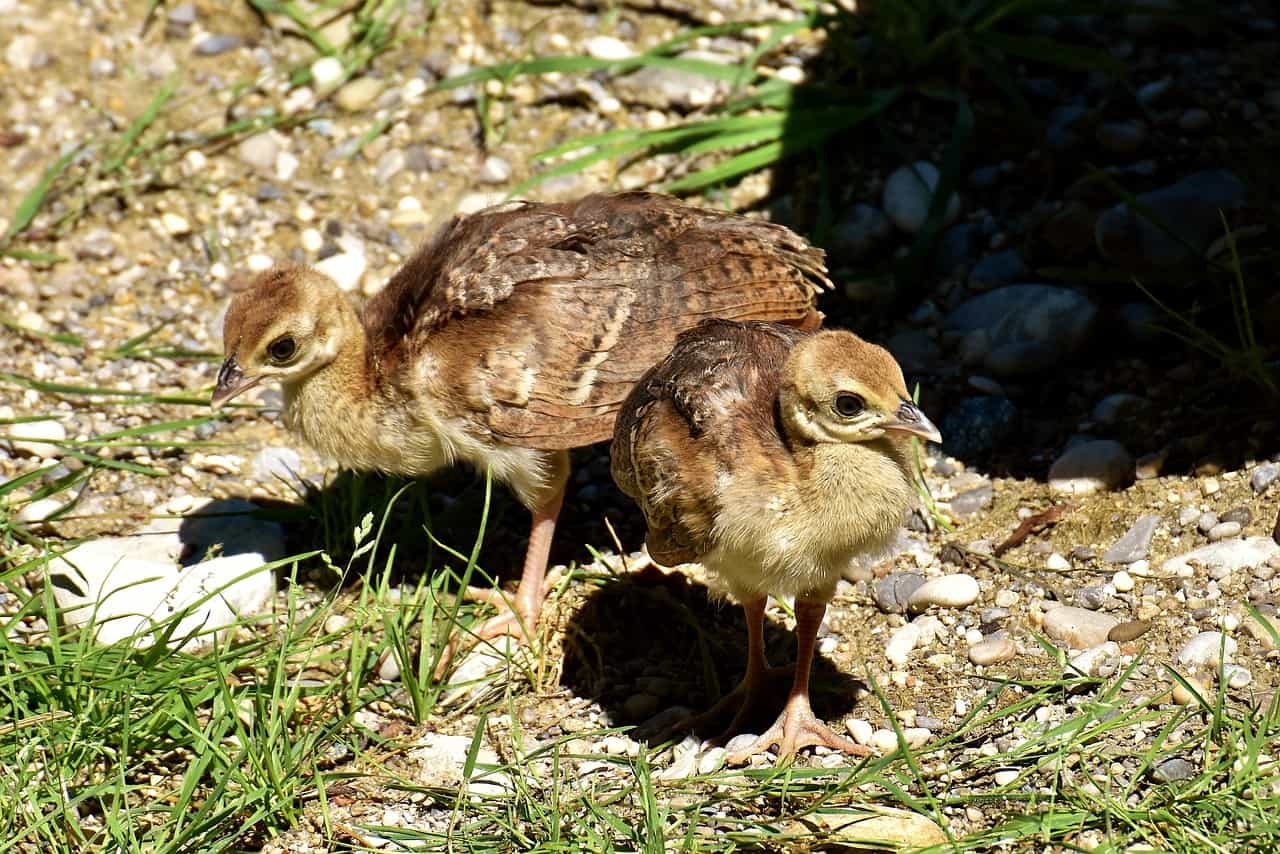
Then, they nurture them around a month before the eggs hatch into peachicks. The high time for clutch-laying is from January to March.
Most peafowls reach sexual maturity at age three.
However, blue peacocks have a reputation for breeding upon reaching two years old.
Peahens are clever birds.
They lay unfertilized eggs as decoys in places far away from their nest in order to confuse predators that might hunt them.
Peafowls can fly.
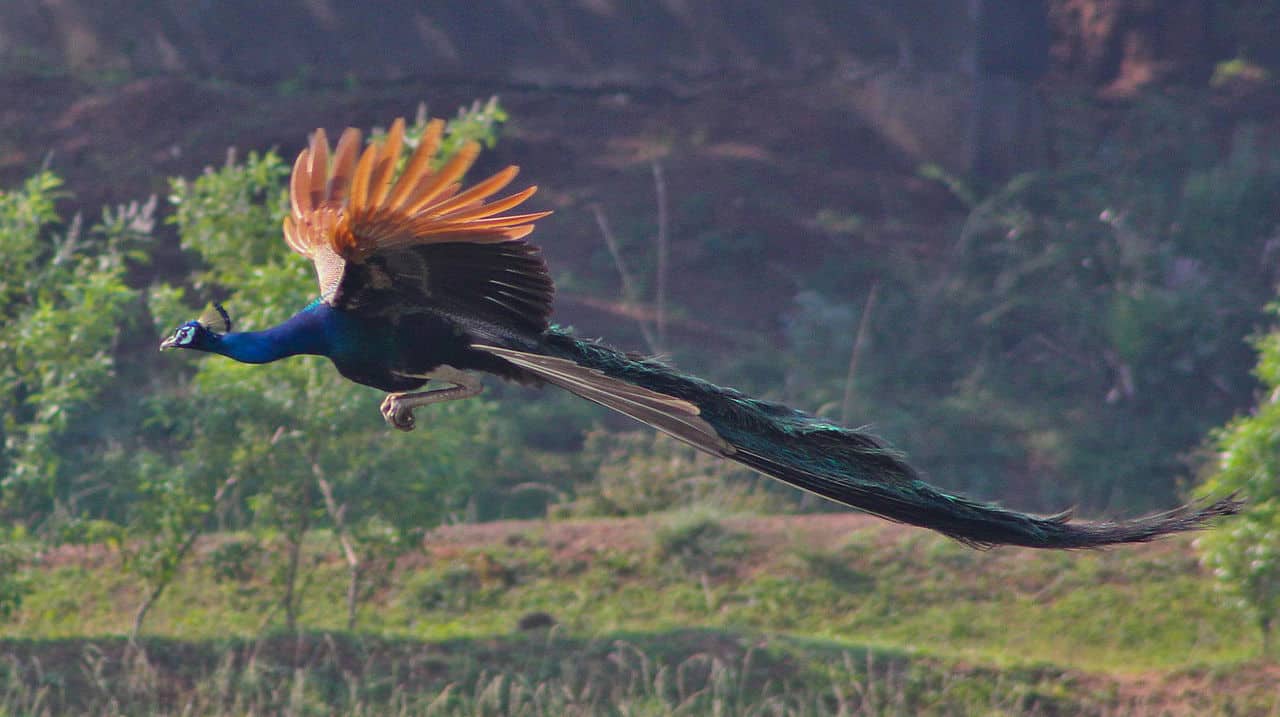
Starting young, peachicks can fly short distances as early as three days old. It may come as a surprising ability at times, considering how fleshy they are. Still, they most often prefer staying on the ground and only tend to fly when escaping predators or retreating into their night roost.
Peacock stands as the national bird of India.
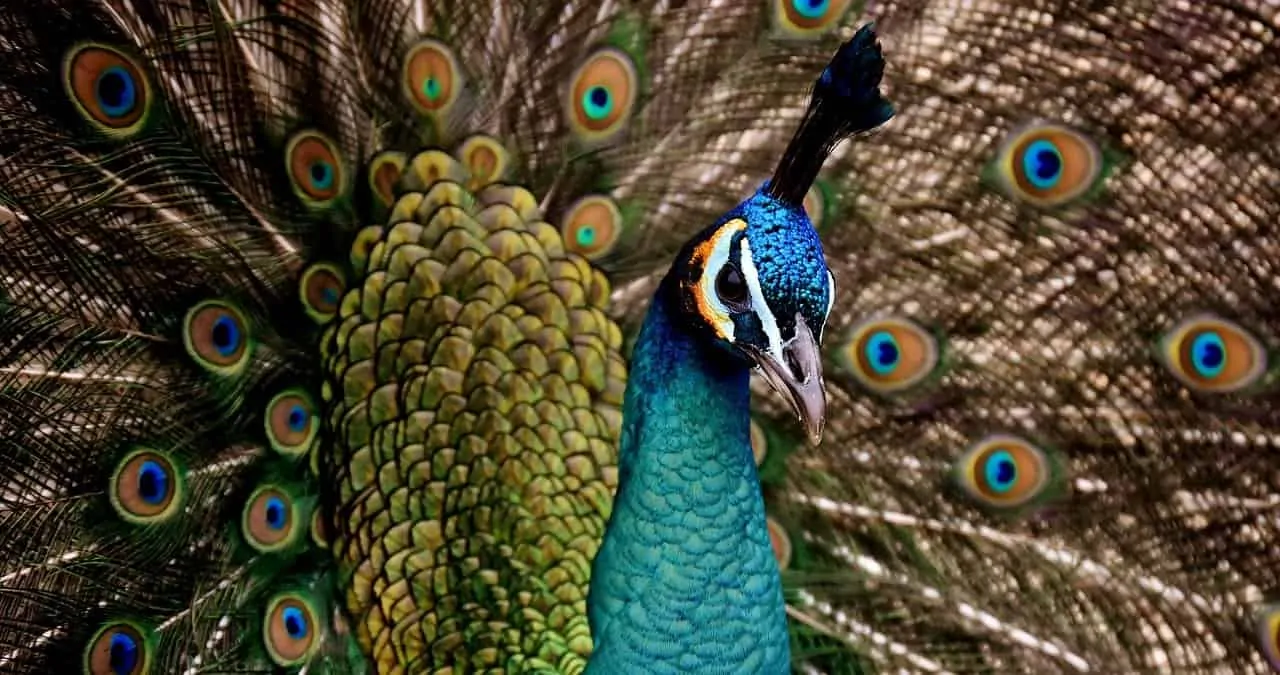
Aside from that, the bird also has a significant meaning in Hinduism. It symbolizes knowledge, benevolence, and compassion. Hindus also regard the peafowl as sacred because they perceive the spots on the birds’ tails as the eyes of the gods.
The grey peacock stands as the national symbol of Burma.
People also believe that white peacock is a bearer of eternal happiness.
Peacocks are protectors in Feng Shui.
Their feathers are believed to safeguard people from threats and disasters. Again, the peculiar ‘eyes’ of the feathers represent a similar meaning.
There are only three kinds of peafowls.
The most common is the Blue Peacock which lives in India and Sri Lanka. Next, the Green Peacock residing in Java and Myanmar or Burma. The Congo Peacock, the lesser-known kind, resides in African rainforests.
Blue peacocks are known to survive northern winters.
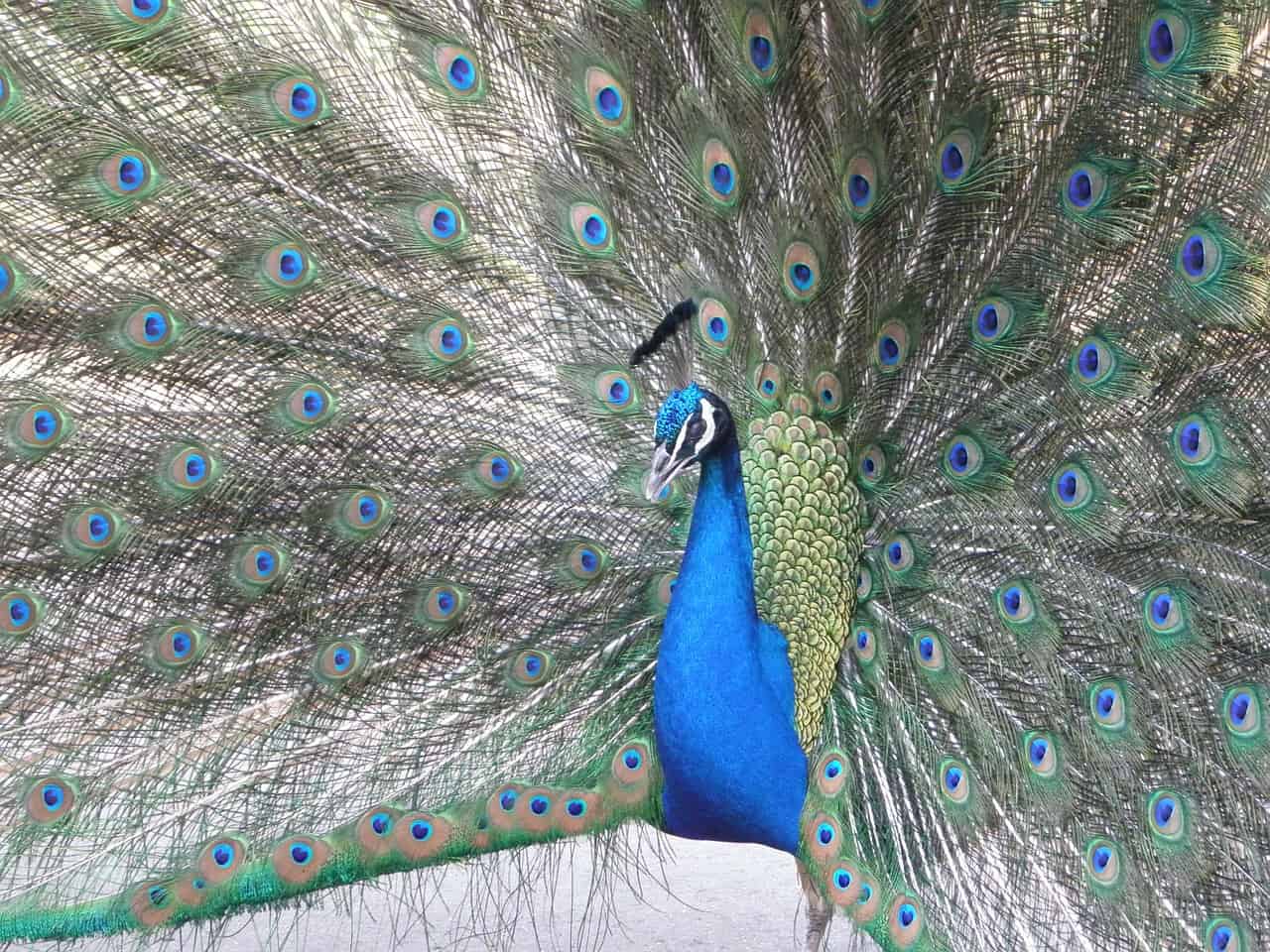
It is quite a shocking peacock fact, considering that they are native to countries of warm and humid climates. On the contrary, the green kind cannot tolerate that much cold.
As distinguished ground-dwellers, peafowls prefer farmlands and warm regions.
They like to dwell in places where they can easily access plants and low trees, making their feeding as convenient as possible. Possible residence for this species is farmlands, rainforests, forests, and bushlands.
Peacocks are domesticated animals.
One of the many reasons that people keep them near is for their great ability in catching snakes. The birds feed on even the poisonous kinds of the said reptiles. Hence, they have a notoriety for ‘keeping the village safe’.
White peacocks are not albino peacocks.
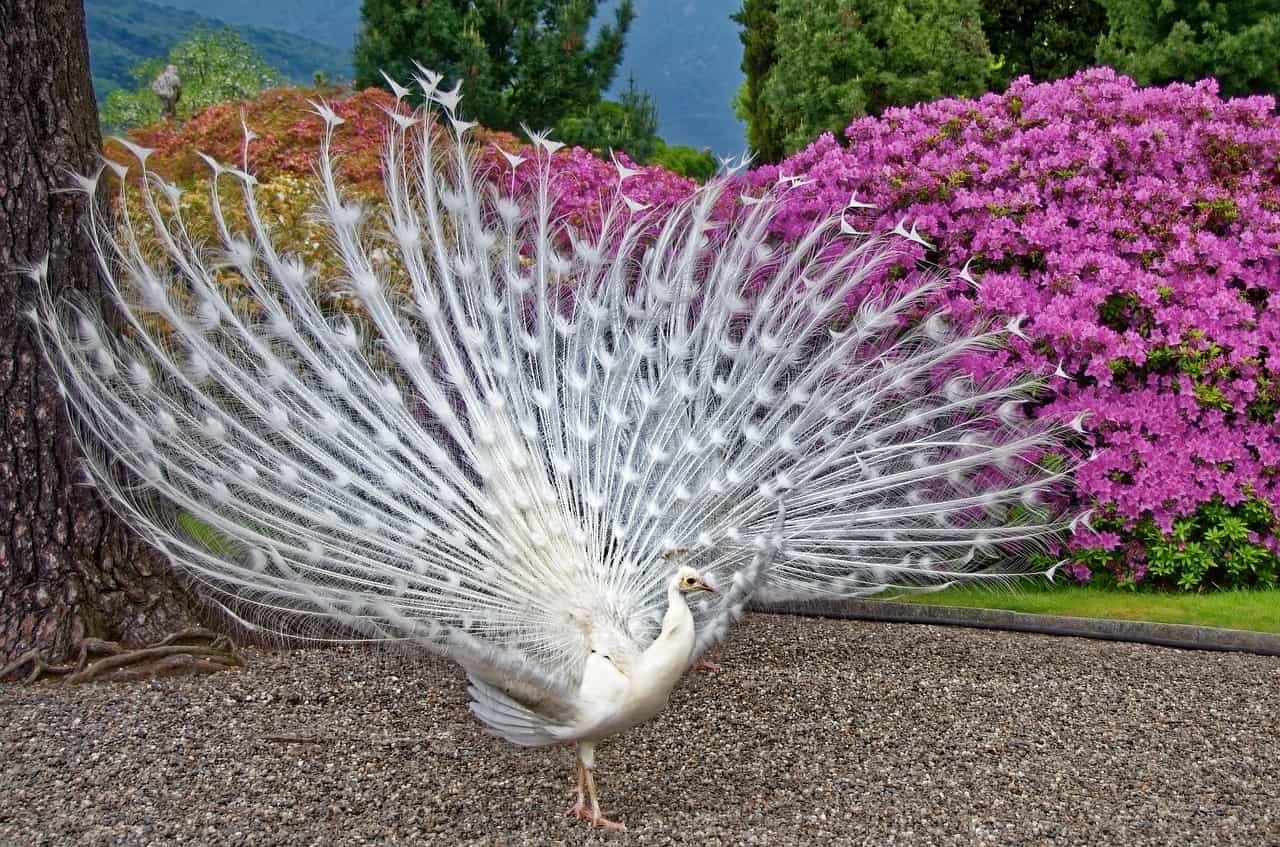
Albinism in animals shows through a complete lack of color and the pinkish or reddish color of the eyes. However, white peafowls are a result of leucism, a condition of dimming skin and feather pigments.
They would be born as yellow peachicks and would gradually grow white with maturity until they are entirely white from their crest down to their train.
The decline peacock population through the years is partly due to hunting.
Another reason is the absence of proper habitats for the species. Blue Indian peacocks are highly protected and secure in their homes, while the Green and Congo species are near endangerment.
By the second half of the 20th century, the Green peacock fell under the Red List of endangered species.
Large areas of its natural parts have been lost over the years alongside overhunting of their species. On the bright side, the International Union for Conservation of Nature (IUCN) cleared the Blue kind as the least concern of the species.
Was this page helpful?
Our commitment to delivering trustworthy and engaging content is at the heart of what we do. Each fact on our site is contributed by real users like you, bringing a wealth of diverse insights and information. To ensure the highest standards of accuracy and reliability, our dedicated editors meticulously review each submission. This process guarantees that the facts we share are not only fascinating but also credible. Trust in our commitment to quality and authenticity as you explore and learn with us.


